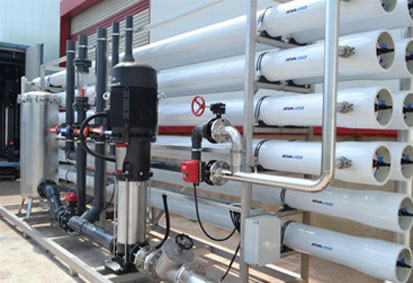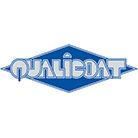Product Categories / Water Treatment / CMC Biocides for Water Treatment
Duracide DBNPA 20
Product description
Duracide 201 is an aqueous formulation containing a 10-15% w/w concentration of DBNPA When properly applied to the RO feed water systems, Duracide 201 is:
- Fast-acting, non-oxidizing biocide
- Effective against a broad spectrum of microorganisms
- Completely miscible with water upon dispersion at end-use levels
Application
DBNPA, the active ingredient in Duracide 201, has proven efficacy at low concentrations against bacteria, fungi, yeast, cyanobacteria (blue-green algae) and the true algae. The DBNPA molecule will function immediately upon introduction into the feed water; the rate o this activity is not affected by pH, and antimicrobial control is rapidly achieved if properly dosed.
Because of its extremely rapid kill, proliferating microbes and their biofilm formation on the RO membranes and in the feed channel spacers are either eliminated or significantly reduced. The low persistency of DBNPA minimizes safety and environmental concerns with water discharge and atmospheric emissions.
When added to an RO system, DBNPA is easily rejected by the thin-film composite membrane layer and, at use dilution, shows excellent compatibility with all materials of construction of the RO membrane module. In addition, DBNPA has been used with great success for the past five years in industrial water applications such as boiler make-up water and offshore oil well flooding operations.
Dosage Requirements
Due to the variety of different source waters for municipal water production, controlled laboratory experiments were undertaken to measure the passage of DBNPA through high rejection sea water (SW) membranes, standard brackish water (BW) membranes, and nanofiltration (NF) membranes1. As with other dissolved species, DBNPA passage into the permeateside
depends on the thin-film membrane type. This dependence is illustrated by the recommended dosage guidelines provided in Table 1.
As shown in Table 1, the on-line addition of Duracide 201 water treatment microbiocide is limited to a product concentration dosage of 50 ppm (10 ppm active) in the RO feed water stream of SW membrane systems. Correspondingly, for BW membrane systems, the on-line addition of Duracide 201 is limited to a product concentration dosage of 15 ppm (3 ppm active) in the RO feed stream. NF-membrane systems do not provide adequate rejection to support the on-line addition of DBNPA to the RO feed water stream for municipal water production. These guidelines are based on the NSF recommendation that DBNPA not exceed 90 ppb in the permeate stream. A reliable process control system is critical for the on-line addition of Duracide 201 for maintaining acceptable levels of DBNPA in the permeate product water.
Table 1: DBNPA Dosage Guidelines for Various RO/NF Membrane Types.

Environmental Advantages
DBNPA offers an advantageous combination of quick kill properties followed by fast chemical degradation, including hydrolysis. The dominant degradation pathway at use conditions invloves reactions with nucleophilic substances or organic material invariably found in water. Nucleophilic degradation forms cyanoacetamide as shown in the above reaction.
When the disposal of concentrate involves the release to large open waterways, additional degradation will occur via exposure to UV-radiation. And upon sufficient dilution, DBNPA and its degradation products become biodegradable. The ultimate degradation products formed from both chemical and biodegradation processes of DBNPA include ammonia, carbon dioxide, and bromide ion.
Therefore, meeting the local environmental regulations for the permitted discharge of the reject stream should not be affected with DBNPA use. However, please note that compliance with local environmental regulations is the responsibility of the end-user.
Off-Line (Clean-in-Place) Addition
Duracide 201 water treatment microbiocide may be added to the feed tank used for an off-line chemical cleaning procedure. Addition should be at a rate of 20 to 200 ppm based on the total amount of solution in the feed tank (2 to 20 fl. oz. per 1000 gallons, or 16 to 160 mls per cubic meter). Following the complete transfer of feed solution, re-circulate or soak for one to three hours to ensure sufficient contact of all RO membrane modules with the DBNPA solution. Following this cleaning cycle, begin a rinse cycle to allow for displacement of three system volumes. This ensures that all of the DBNPA solution has been flushed from the entire RO membrane module system. The time required to complete this rinse cycle will depend on the rinse rate and system volume size. It is critical to execute this rinse cycle before valving the permeate stream to the permeate water storage tank.
Specification
Appearance : Clear Colourless to brown liquid
Odour: : Characteristic
pH at 25°C : 1.5 – 5
Density at 25°C : 1.1 – 1.25 gm/cm³
Packaging type
Dark HDPE container sealed cap
Storage Conditions
Store in a cool, dry and good ventilated place. Keep container tightly closed after opening. Prevent direct sun light or ignition sources.
Temperature Limit
max 35°C.
Maximum Storage Period
6 Months under standard storage conditions.


